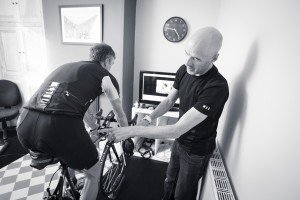It’s likely in the Top Three questions asked during a fit: What shoes should I buy?
And like all the best and most important questions, there isn’t a simple answer.
In terms of performance, your feet are arguably your most crucial point of contact with the bike.
Bad shoes, or more precisely badly fitting shoes, can mean pain, injury, sub-optimal cleat placement and more pain.
All of those things can cost you power, speed and enjoyment.
Which means I am always surprised by the number of clients – and I’m talking about a significant majority – who buy their shoes online, totally blind.
I won’t preach, because I’ve done it myself over the years.
But while we know they’re cheaper, and we know they look bling bling in that fluoro/pearlescent/whatever, do they fit?
Experience tells us that, regardless of sizing and/or width fitting options, some people just do not suit some shoes.
So, the golden rule: Try before you buy, even if it costs you a few quid extra.
And almost as importantly, find a retailer with a good selection across different brands; that way at least you’re giving your feet some different reference points in terms of feel.
A few more tips.
Take out the insole, place your foot on it; are you spilling over the edge or sitting nicely within its boundaries?
If you know your ideal cleat position, is it achievable? Different manufacturers drills holes in different places and even the best fitting shoe is massively compromised if your cleats are 1cm out of whack.
Think less about the width of the shoe and more about the overall volume. A bigger, taller foot can make even a wide shoe feel narrow as the upper is pulled tight across the foot.
Look at the quality of the insole? Is it thick? Thin? In between? Generally, although not exclusively, stock insoles are pretty poor. So, if you’re using a footbed – like the Sidas available here: http://www.fit2ride.cc/sidas-custom-footbeds/ – or an orthotic, make sure there is room in the shoe to accommodate them.
In terms of the fit of the shoe though, trust your instincts.
If they feel right, and everything else is equal, then they probably are right.



